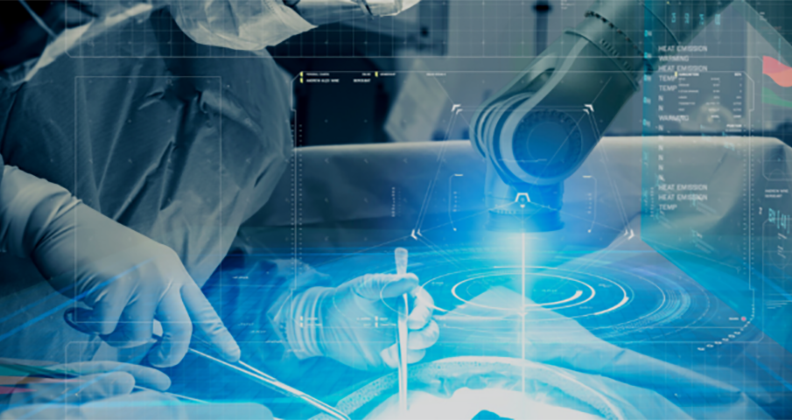
Robotics remains a hotly discussed topic amongst orthopedic surgeons. OMTEC 2019 provided a stage for the continued debate during the surgeon keynote, with active robotic users calling for technology advancements and a non-user recommending adoption be based on data and outcomes.
Kornelis Poelstra, M.D., a spine surgeon who has performed more than 700 surgeries with Mazor systems and is transitioning his practice to The Robotic Spine Institute of Silicon Valley, unsurprisingly was the first surgeon to note that robotics will play a large role in orthopedics and spine moving forward. Dr. Poelstra noted that while robotics is still in its early days, “it’s spectacular what we’ve been able to do,” citing improved accuracy, reduced complications and fewer revisions.
Current robotic platforms perform surgeries similar to the way that human doctors do them, Poelstra says, but that doesn’t have to be so. He believes that robotics will eventually lead to more advanced ways to perform orthopedic procedures.
Douglas Unis, M.D., a joint replacement surgeon at Mount Sinai and Founder and Chief Medical Officer of Monogram Orthopaedics—a device company developing its own robot—emphasized that robotics are still in their first generation.
“The stuff that we’re using now is like the Commodore 64 Atari compared to the world of industrial robotics,” Dr. Unis said. “The technology that’s in orthopedics is relatively primitive compared to what you’d find at Tesla—and very expensive.”
But Dr. Unis said that even the primitive technology is still really good, pointing to studies on knee replacement that indicate better outcomes than manual surgeries. He predicts that soon the price of robotics in orthopedics will plummet and machine vision—which allows the robot to see what’s in front of it, as if using eyes—will speed the process of moving into the next generation of robotics in implants.
Joshua Jacobs, M.D., Chairman of the Department of Orthopedic Surgery at Rush University Medical Center, noted that what Drs. Unis and Poelstra said during their presentations was “a wonderful vision of the future. It’s really exciting and inspiring. I sure hope we get there,” he said. “However where we are now makes me wonder how we’re actually going to get there.”
Robotics is the standard of care in many sister specialties, including gynecology and oncology, Dr. Jacobs said. But he believes that surgeons must be very deliberate and scientific when adopting new technology. There must be clinical trials and randomized controlled studies, when possible, before robot-directed implant surgery is widely adopted.
“That will give us confidence that the new technology will be an improvement and protect us from some of the disasters,” Dr. Jacobs said, referencing metal-on-metal hips. “And more to the point, it will get people to pay for it. That’s a real challenge with some of these new technologies.”
Dr. Poelstra agreed with Dr. Jacobs that “a fool with a tool remains a fool.” He noted that other industries employ robotics that can perform extremely complex tasks, such as creating textiles. Machine vision has allowed robotics to be more flexible; he’s even heard of a robotics company that created a tool that can close universal wounds.
“I have great hopes in all honesty that between now and 10 years from now, a simple spine operation will be done 75% by a robot,” Poelstra said, “with machine learning and the ability to see and close the wound in a more predictable fashion.”
Hal Conick is an ORTHOWORLD® Contributing Editor.




